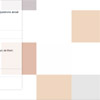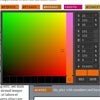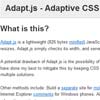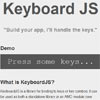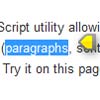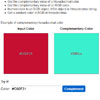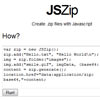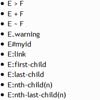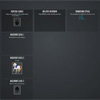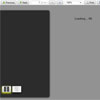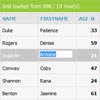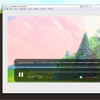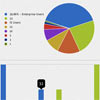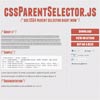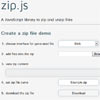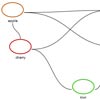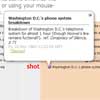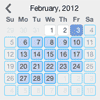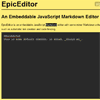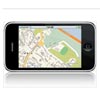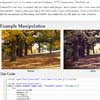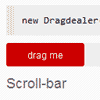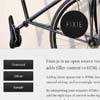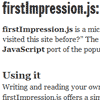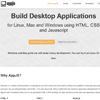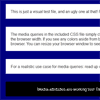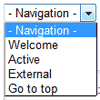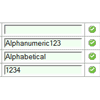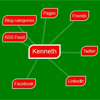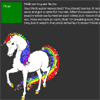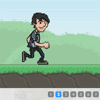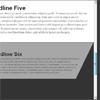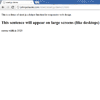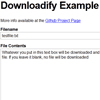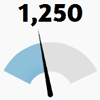Feature.js
Feature.js is a fast, simple and lightweight browser feature detection library. It has no dependencies and weighs only 1kb minified and gzipped. Feature.js automatically initializes itself on page load, so you don’t have to. It doesn’t, however, run any tests while initializing, so it will only ever run them when you ask it to. This makes it perform very fast.
With Feature.js, it’s simple to build progressively enhanced experiences that use feature detection to determine if a code can be executed in the user’s browser.
How to use
First, include the script somewhere on your page — usually either in the <head> or just before the </body> closing tag. No need to initialize or do anything else really, all the feature tests are now available for usage:
if (feature.webGL) { console.log("WebGL supported"); } else { console.log("WebGL not supported"); }If you want to add a class to the <html> element like Modernizr does when something is supported, that’s simple:
if (feature.webGL) { document.documentElement.className += " webgl"; }If you’re using jQuery, it’s even more simple:
if (feature.webGL) { $("html").addClass("webgl"); }Combining multiple feature tests is possible too, you can just write an if statement like:
if (feature.canvas && feature.webGL) { console.log("Canvas and WebGL are supported") }When you want to target JavaScript only towards browsers that support the features you need, you can check inside a function if the tests return false and stop further execution:
(function() { if (!feature.webGL || !feature.svg) { throw new Error("WebGL or SVG isn’t supported"); } console.log("Browser supports both WebGL & SVG"); })();Gotchas
There are few gotchas related to browser feature detection in general and these things are good to keep in mind when using the Feature.js library.
TOUCH: Feature.js tries to detect if touch events are supported, but this doesn’t necessarily reflect a touch screen device. Sometimes you might get a false positive on a device that doesn’t really have touchscreen since it’s virtually impossible nowadays to detect this accurately. For 95-98% of the time this test should be correct though, but you should always keep this in mind when using this detection.
CSS 3D TRANSFORMS: Current implementation might give false positive on some older Android stock WebKits in very rare cases. This issue is currently being tracked and will be addressed in the future releases if needed.
DEVICE MOTION & ORIENTATION: Keep in mind that many desktop browsers support these event listeners, and will hence give a positive result even though the device might not have the needed sensors.
PLACEHOLDERS: Feature.js gives false negative for iOS 3 Safari, but since this OS has basically no users, it’s not considered an issue at the moment.
API reference
Tests
Below you’ll find a list of all the available browser feature tests and how to call them.
feature.async feature.addEventListener feature.canvas feature.classList feature.cors feature.contextMenu feature.css3Dtransform feature.cssTransform feature.cssTransition feature.defer feature.deviceMotion feature.deviceOrientation feature.geolocation feature.historyAPI feature.placeholder feature.localStorage feature.matchMedia feature.pictureElement feature.querySelectorAll feature.remUnit feature.serviceWorker feature.sizes feature.srcset feature.svg feature.touch feature.viewportUnit feature.webGLCSS Feature Hooks
By running:
feature.testAll()each aforementioned test will be run and its result will be added to the class names on the root html element on the page:
<html class=" js css3dtransform csstransform csstransition addeventlistener queryselectorall matchmedia devicemotion deviceorientation contextmenu classlist placeholder localstorage historyapi viewportunit remunit canvas svg webgl cors async defer geolocation srcset sizes pictureelement" lang="en">Extending
You can also extend the library through:
feature.extend(NAME, CALLBACK);This way you can add your own tests to the library, the result of which will also be integrated with the testAll() method. Here's a contrived example:
<script src="path/to/feature.js"></script> <script> feature.extend('foo', function () { return true; }); feature.testAll(); </script>This would add the foo class name to the html document element as well.
Use this to write your own tests, customize existing tests, or as a stop-gap measure to fix a bug in a test between releases of the library. Please share the love, if you find yourself in the latter example, by submitting an issue for us to fix in an upcoming release.
Utilities
feature.extend will graciously expose the utility methods to your callback. These utilities are used internally within the library and will help unify your added tests:
feature.extend('foo', function (util) { // Simple create element method util.create('image'); // returns HTMLElement // Test if it's an old device that we want to filter out util.old; // returns Boolean // Function that takes a standard CSS property name as a parameter and returns // its prefixed version valid for the current browser it runs in util.pfx('transition'); // Returns falsey if unsupported, truthy if supported });Live demo
- Official site with live tests: http://featurejs.com
- Test with actual features: http://featurejs.com/test
Download
- Download the latest release
- Install by running
npm install feature.js
Contributing
Local development requires both Node and Gulp. You can install Node by visiting nodejs.org and following the website’s instructions. If you have Node.js already installed, you can proceed by installing npm and its dependencies:
$ npm install // If you’re getting an error about permissions you might have to use sudo: $ sudo npm installTo build the feature.min.js file run the following command:
$ npm run buildThe build script will automatically lint the file and fail the build if any linting offenses were found. To run the linter outside of the build step, run the following command:
$ npm run lintTo run the tests, which are also run during the build task, use:
$ npm run testChangelog
View the full changelog CHANGELOG.md.
Tested on the following platforms
- iOS 3.0+
- Android 1.6+
- Windows Phone 7.0+
- Blackberry 3.0+
- Blackberry Tablet 1.0+
- Jolla 1.0+
- Kindle 3.3+
- Maemo 5.0+
- Meego 1.2+
- Symbian 3
- Symbian Belle
- Symbian S40 Asha
- webOS 2.0+
- Windows XP+ (IE6 and up)
- Mac OS X
License
The MIT License (MIT)
Copyright (c) 2016 Viljami Salminen
Permission is hereby granted, free of charge, to any person obtaining a copy of this software and associated documentation files (the "Software"), to deal in the Software without restriction, including without limitation the rights to use, copy, modify, merge, publish, distribute, sublicense, and/or sell copies of the Software, and to permit persons to whom the Software is furnished to do so, subject to the following conditions:
The above copyright notice and this permission notice shall be included in all copies or substantial portions of the Software.
THE SOFTWARE IS PROVIDED "AS IS", WITHOUT WARRANTY OF ANY KIND, EXPRESS OR IMPLIED, INCLUDING BUT NOT LIMITED TO THE WARRANTIES OF MERCHANTABILITY, FITNESS FOR A PARTICULAR PURPOSE AND NONINFRINGEMENT. IN NO EVENT SHALL THE AUTHORS OR COPYRIGHT HOLDERS BE LIABLE FOR ANY CLAIM, DAMAGES OR OTHER LIABILITY, WHETHER IN AN ACTION OF CONTRACT, TORT OR OTHERWISE, ARISING FROM, OUT OF OR IN CONNECTION WITH THE SOFTWARE OR THE USE OR OTHER DEALINGS IN THE SOFTWARE.

